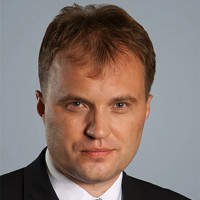Twenty years ago this spring, newly independent Moldova, a former Soviet republic lodged between Romania and Ukraine, was consumed by fighting between neighbors on opposite banks of the Dniester River. The conflict broke out because citizens on the eastern or “left” bank of the river, in the largely Russian-speaking region known as Transnistria, feared that Romanian-speaking right-bank Moldovans would form a federal union with neighboring Romania. With tacit support from Moscow and in the protective shadow of the Russian 14th Army, Transnistria declared itself an independent republic in its own right and fought to establish its sovereignty. The conflict lasted through midsummer and cost more than a thousand lives.
After that bloody season in 1992, the Transnistrian war settled into a kind of suspended animation, becoming one of the handful of so-called frozen conflicts in the post-Soviet space. For years, the two sides convened and disbanded various negotiation formats, while rhetoric flared over disputed language, transit and property rights. The conflict mostly avoided international headlines and was bloodless for nearly two decades -- until New Year’s Day, when a Russian peacekeeper shot and killed a young Moldovan man at a checkpoint on the Vadul Lui Voda Bridge near Moldova’s capitol, Chisinau.
Tragic as the shooting was, it was also a fitting reminder that the conflict over Transnistria should no longer be ignored by regional powers and the wider world. Over the past year, governments on the left and right banks of the Dniester have undergone major changes that are likely to improve the lives of ordinary people and hold real promise for conflict resolution. In Moldova, a pro-European coalition that has held a majority in parliament since 2009 finally succeeded in electing a president, obviating the need for new elections until 2014 and offering Chisinau a window of opportunity to implement a longer-term reform agenda. In Transnistria, a Web-savvy, reform-minded 42-year-old has been elected president, replacing the Soviet-era factory boss who had ruled the region for the preceding two decades.

